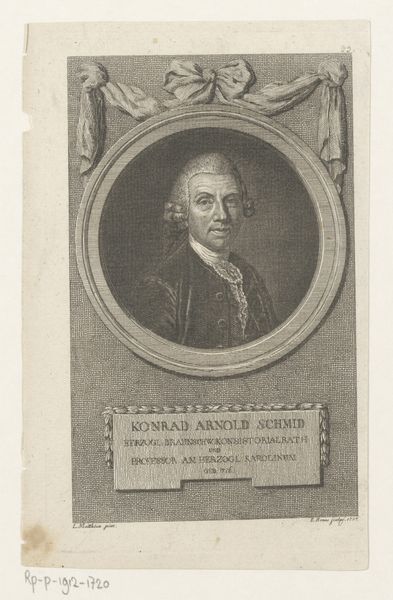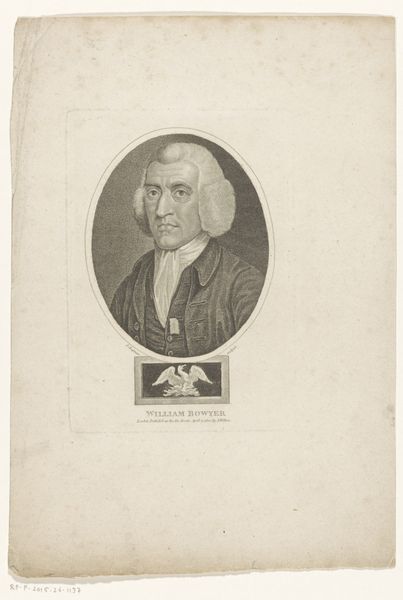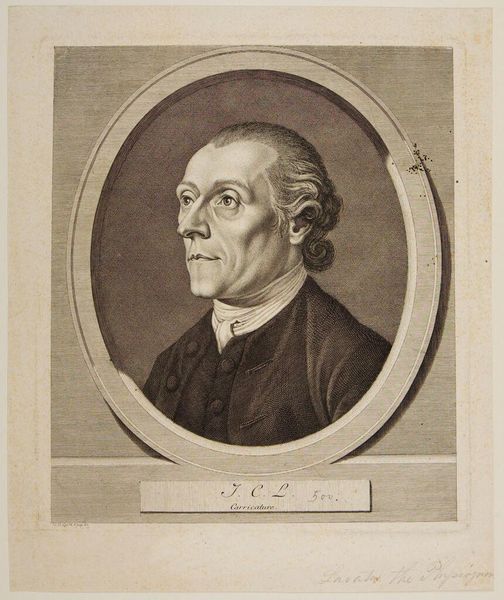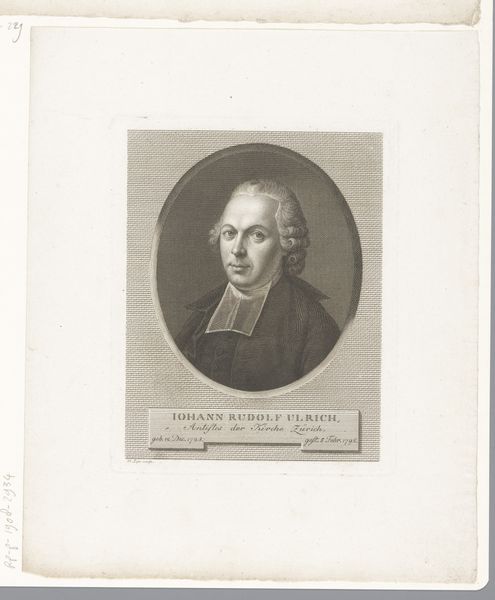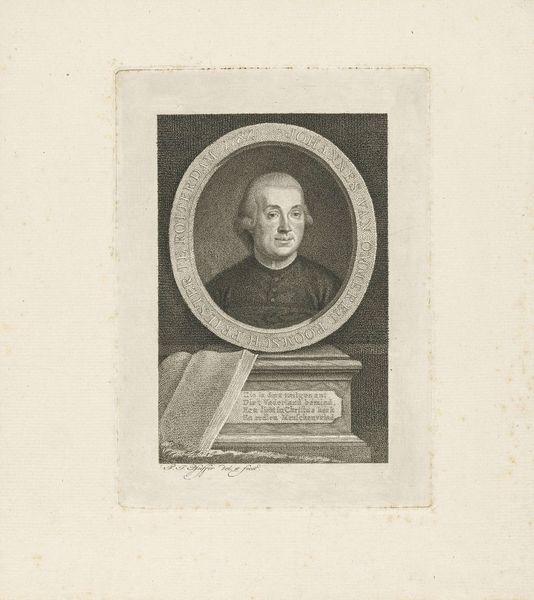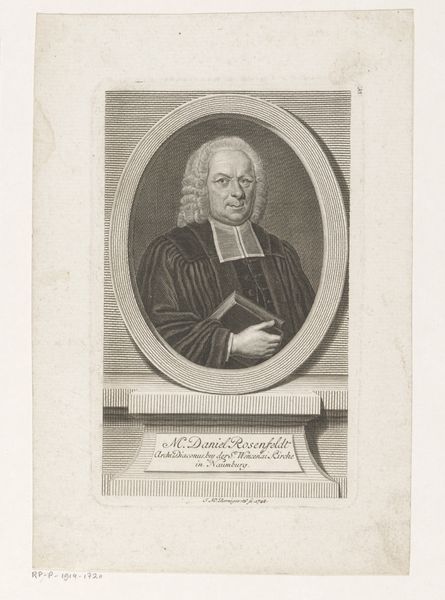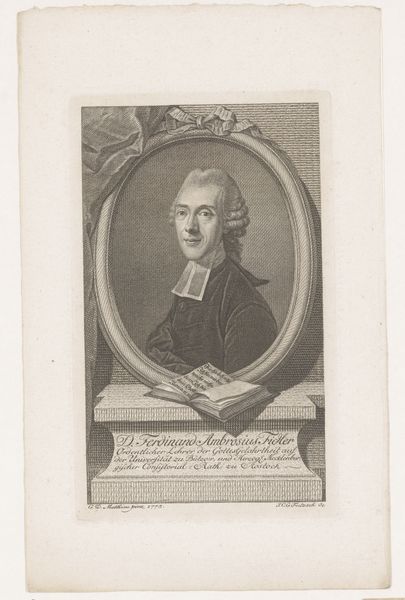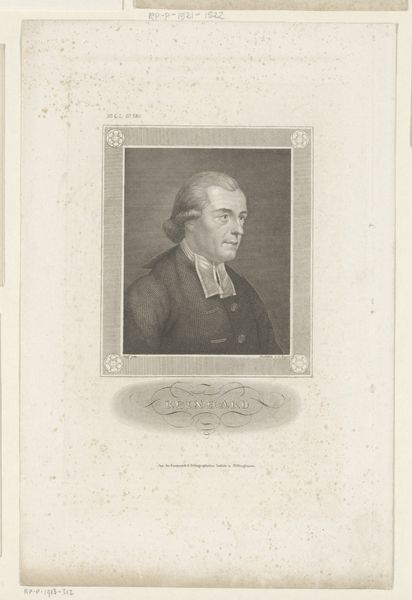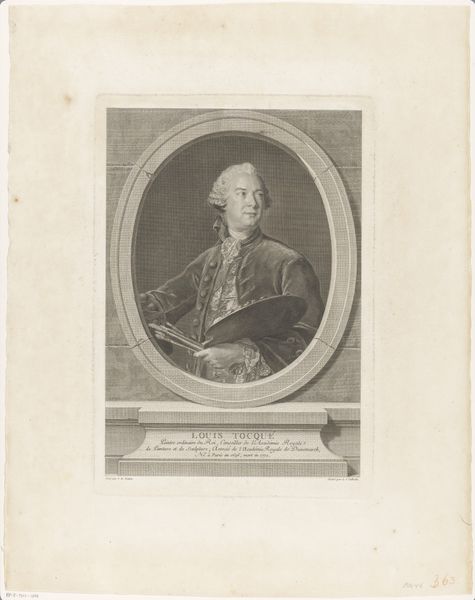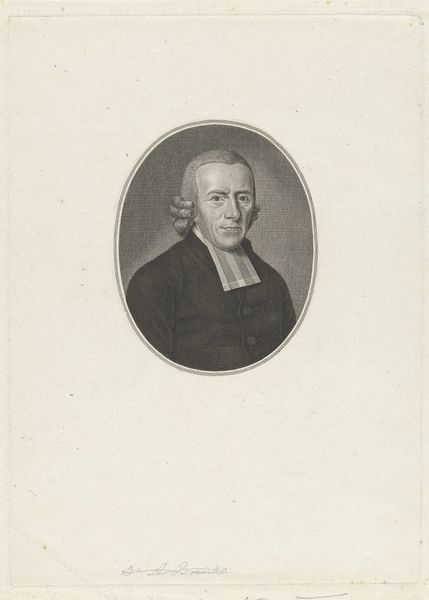
engraving
#
portrait
#
neoclacissism
#
history-painting
#
academic-art
#
engraving
Dimensions: height 264 mm, width 231 mm
Copyright: Rijks Museum: Open Domain
Curator: Here we have Johann Heinrich Lips' engraving of Johann Kaspar Lavater, created around 1780. You'll find it in the Rijksmuseum's collection. It's quite a striking example of Neoclassical portraiture. Editor: My first impression is how austere it feels. The tightly framed oval and the precise lines almost give the feeling of a cameo, though much larger of course. Curator: Exactly. The engraving style, so typical of the period, lends a cool, intellectual air to the subject. It also resonates with the Neoclassical interest in line and form over color. This image seeks to represent the very essence of the subject. Lavater was a theologian and philosopher who developed the pseudo-science of physiognomy, by the way, so people tried to ascertain character from the physical appearence of a person. Editor: Ah, that adds a whole layer! Looking at it now, it feels almost like a clinical study of the face, not a celebration of a person. The lack of warmth in the rendering only reinforces that sensation. Almost like an archetypical ideal. And of course, this reminds of contemporary ways that we still try to categorize others via race and gender. Curator: Lips was definitely making use of the conventional visual language of the time. Notice how Lavater's gaze is directed just off to the side? That was a common trick in portraiture. It gave a sense of intelligence and contemplation. And this kind of "profile shot," placing greater focus on one side of the face in particular, helps one examine his bone structure. In Lavater's line of thinking, someone could come to know this person and what they are about just from the formal characteristics of their skull! Editor: I find the context fascinating. How perception can shift so drastically! Without understanding Lavater's work, the engraving seemed merely cold. Now it carries with it an air of almost... sinister calculation? It makes you think about the baggage and assumptions we unknowingly carry into how we percieve things. Curator: Precisely! The image becomes a kind of mirror reflecting our own biases and preconceptions about what is important, who is good, and where things may go. That makes Lips' work here much more than just a simple representation; it's an encapsulation of an entire intellectual climate. Editor: Absolutely, something to consider. The past always looking at us with equal curiousity.
Comments
No comments
Be the first to comment and join the conversation on the ultimate creative platform.
